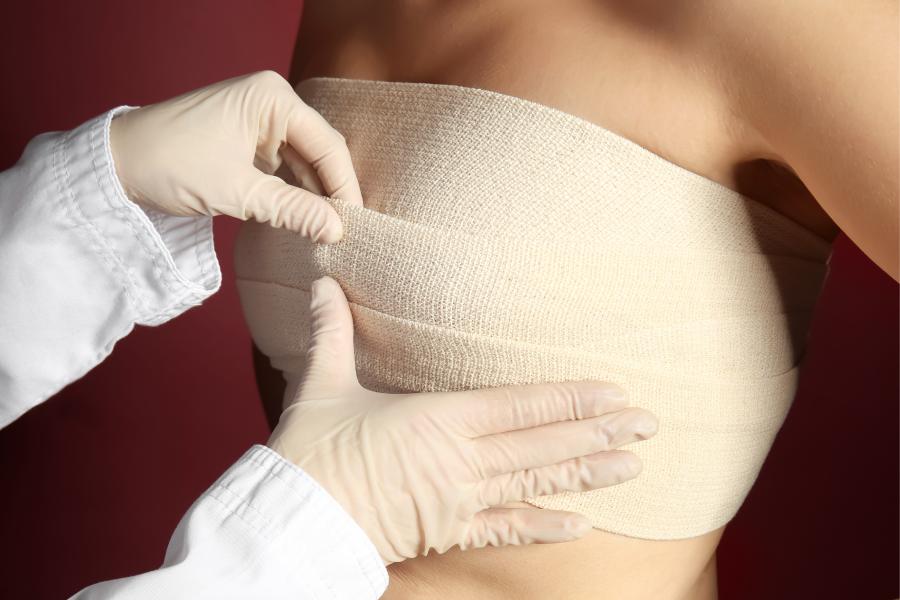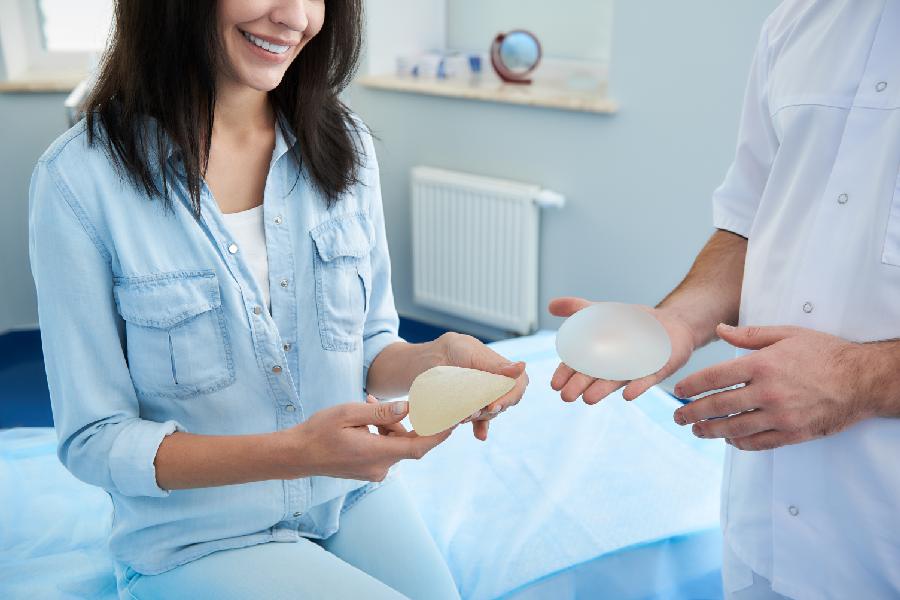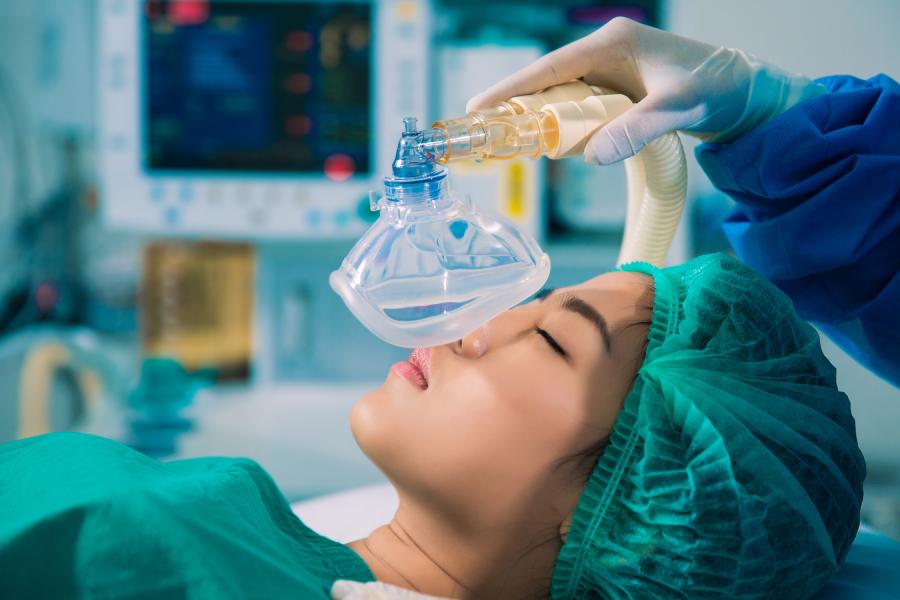Plastic surgery has evolved tremendously. Breast augmentation surgery has become frequent since its humble beginnings, which can be traced back v to the early 1960s. Even then, patients have had lengthy lists of questions for their surgeons prior to surgery. Out of all those questions, the most asked one by people who wanted to have the procedure is how long does breast augmentation take.
[ez-toc]

Source: shutterstock.com/ Photo Contributor: Aquarius Studio
How Long Does Breast Augmentation Take?
On average, the duration of a breast augmentation procedure can last anywhere from 45 minutes to two hours. Sometimes even more.
It’s difficult to estimate how long an individual procedure would take without consulting your surgeon first. Each breast augmentation is unique to the person getting it.
Ultimately the surgical procedure itself takes only a small fraction of the time required for breast augmentation surgery.
A breast augmentation appointment consists of a few steps, which tend to be calculated into the duration time of the procedure.
Steps to breast augmentation
The check-in process
For the procedure, you might need to fill out some papers and sign certain forms.
Getting ready for the operation
Your chest will be washed with antibacterial soap as soon as you change into a hospital gown. This will reduce the possibility of an infection. Then your surgeon will mark the incisions on your chest.
Afterward, vital-checking devices will be attached to you. These machines will keep track of your blood pressure, heart rate, pulse, and breathing while you’re unconscious.
Following the administration of anesthetics, the IV and anesthesia drips will be linked. The anesthesiologist will keep an eye on these lines during the procedure.
The surgery process
As soon as you’re asleep, your surgeon will make the incisions they had originally marked on your chest.
The breast implant will then be put in place. Your breast implant will either be positioned beneath your breast tissue or the pectoral muscle. This depends on the type of implant you and your doctor select.
The kind and size of the breast implant will help your surgeon decide on the best technique he should use to perform the procedure.
Recovery period
Immediately following your breast augmentation, you will be brought to a recovery room, where you will awaken from the anesthetic. Nurses will spend an hour to an hour and a half monitoring you.
Discharge
You will be released the same day after the surgery if the surgical team is confident that your vitals are in order and that you’re not suffering any side effects from the anesthetic.
However, you won’t be able to drive yourself home. The anesthesia usually makes patients drowsy, which enables fast reflexes.
Also, after the surgery, you might be advised and given to take heavy pain medication. These are considered narcotics which means you’ll be under the influence.
Factors influencing the duration of breast augmentation procedure
There are two types of breast augmentation surgeries. One is a breast implant augmentation, and the other is a fat transfer augmentation.
Fat transfer augmentation is often used for small enhancements. The surgeon would transfer fat from a certain body area to your chest. The fat can be taken from the stomach, back, thigh, or flanks.
Fat transfer breast augmentation can take from three to four hours on average.
On the other hand, breast surgeries that require an implant to be inserted are often quick operations. However, circumstances determine the procedure length since each operation is unique.
The following are some of the factors that influence the duration of a breast augmentation procedure:
- The type of breast implant that will be utilized
- The sort of incision that will be made
- The sort of anesthetic that will be employed
Types of breast implants
The type of breast implant a doctor will use would determine how long is a breast augmentation surgery. Types of breast implants include:
- Saline breast implants
- Structured saline breast implants
- Silicone breast implants
- Form-stable breast implants
- Round breast implants
- Smooth breast implants
- Textured breast implants
The two most popular and commonly used breast implants in the US are silicone and saline breast implants.
Silicone implants are created using silicone gel. If the gel were to rupture, it may leak into your breast or stay inside the implant’s shell. In order to ensure that your silicone implants are working properly, you may need to arrange regular appointments with your cosmetic surgeon.
Saline implants are filled with sterile saline or salt water. If the implant ruptures inside your breast, the saline would be absorbed by your body and removed naturally.
If your surgeon uses silicone implants, they’re already filled with silicone which would cut down on surgery time. Saline implants, however, are filled once they’re inserted.

Source: shutterstock.com/ Photo Contributor: Aquarius Studio
Types of surgical breast incisions
There are several methods for breast augmentation. Your surgeon can do the operation:
- Via the inframammary fold – the crease under the breast
- Via the periareolar incision – the area around the areola
- Via the armpit – commonly known as the “transaxillary technique”
Before your operation, your surgeon should go over these potential approaches with you. You will then decide which strategy best meets your needs.
Types of anesthesia
For this kind of procedure, general anesthesia is typically used on women.
However, there are two types of anesthesia a doctor can use – local and general anesthesia. Local anesthesia is used so the patient is awake, and only the breast is numbed to block discomfort. General anesthesia is used so that the patient is put to sleep.
General anesthesia
Because general anesthesia momentarily paralyzes the patient to prevent them from moving or experiencing discomfort, a breathing tube will be inserted into the trachea. Throughout the surgery, the tube will be attached to a ventilator which aids in breathing.
Although general anesthesia is a common choice among plastic surgeons, it has a number of unfavorable side effects, some of which may include:
- Throat pain caused by breathing tube
- Nausea and vomiting when you first wake up
- Surgery-related discomfort is noticed right away when the general anesthetic wears off since the location wasn’t locally numbed
- An extended, drug-like hangover that persists for days following the operation
Local anesthesia
Patients who get local anesthetic are put into a calm, pain-free, yet awake state.
Local sedation has a number of benefits over general anesthetics, such as:
- The patient can breathe on their own
- Patients don’t experience any discomfort and have no recollection of the surgery because they are awake but not fully conscious
- It’s safer and less likely to result in an overdose
- Immediately following surgery, patients have reduced pain because of numbing local injections around the breast
- Significantly reduced post-procedure nausea or hangover

Source: shutterstock.com/ Photo Contributor: Aquarius Studio
Make Sure to Get a Competent Surgeon
You should schedule a meeting with your surgeon prior to your surgery. Prepare to ask lots of questions about their background, the procedure, as well as the expected results.
A great and competent surgeon shouldn’t leave any questions unanswered, and they shouldn’t circle around the topic but rather give it to you directly as it is.
The surgeon should be able to explain if you’re a suitable candidate for breast implants. If yes, you should discuss the many types of implants, different shapes and sizes, and placement alternatives depending on your specific wants and needs.
After you decide on the implant, ask the surgeon for a copy of the patient’s labeling for the breast implant. This should contain a patient leaflet with crucial information regarding your breast implant, a boxed warning, and a patient’s choice checklist.
You have the right to ask for this information, and your doctor is required to hand it to you. If they don’t have it or say it’s information they can’t disclose, don’t go through with the procedure.
Also, they shouldn’t leave out the risks that could come about during and after surgery.
You should also get a portfolio of before and after photos from previous patients. This will assist you in understanding your expectations and probable results following surgery.
You should be asked to explain your medical history, including any medical issues or medicine allergies you may have.
You should also mention any past procedures you’ve had, particularly to the breasts, as well as any medication you’re now taking. This includes over-the-counter pharmaceuticals, vitamin supplements, and herbal remedies.
It’s critical to inform the surgeon if you suspect you might be pregnant.
How Long Does Recovery From Breast Augmentation Last?
The average recovery period after breast augmentation surgery is six to eight weeks.
Now let’s look at what you could expect starting from day one up to three months post-op:
1 day after surgery
One day after the procedure, your breasts might feel firm and tight and look compressed. Your nipples might point downward, which will make them appear low. You might experience bruising, as well as swelling.
You should also be prescribed painkillers and given a special bra that should constantly be worn, except in the shower.
1 week after surgery
Your breast tissue might still be tight and firm, and your nipples still may appear low. You should start to see a little bit of a round definition on the bottom of the breast. Yet, the sides will probably still look more like a square.
Your bruises and swelling should almost be nonexistent at this point. Some patients might feel itching and burning sensations for a couple of days. If your swelling has calmed down, you may start walking.
2-3 weeks after surgery
Your breast might still be firm but will be looser and softer. The nipples should start to elevate at this point. At this time, your breast should start to round out nicely.
Bruising and swelling should be gone; however, you might experience itching and burning still as the body is starting to accept the implants. The two to three-week timeframe is when you might see some asymmetry which is normal.
Light activities like biking and walking are acceptable, but you should stay away from activities that involve bouncing and jumping.
6 weeks after surgery
At around six weeks, your breasts should start looking natural and feel soft. The nipples should start rising to the center even faster.
You still might experience pain and burning; however, it won’t be as frequent. This is also the time when you might start sleeping on the side but not on your stomach.
8 weeks after surgery
Your breasts should be softer than ever before and look natural since your nipples should be in a good position. Also, they should be well-rounded out. Asymmetry might still be present, but only slightly.
At the eight-week mark, you might be given the green light to do activities such as running, upper body workouts, and HIIT.
12 weeks after surgery
After three months, your breasts should have a nice and attractive shape. Some patients might be completely healed at this point. Your breasts should be soft, well-rounded, and the nipples should be in the right place.
In terms of exercise, you might be able to regularly do upper-body workouts even if they involve heavy lifting.

Source: shutterstock.com/ Photo Contributor: Motortion Films
Frequently Asked Questions
Will I feel pain as I heal from my breast augmentation procedure?
Usually, the process is not that uncomfortable. After the first few days, the majority of patients can control their pain using OTC analgesics.
How long after having breast enhancement surgery will my swelling last?
The swelling is supposed to dramatically decrease, approximately as short as after a week. As the months pass by, the swelling will be completely gone. However, for some patients, it takes up to a year for the swelling to fully disappear.
Does the competence of my surgeon affect how long does breast augmentation take?
Yes, the skills of your doctor and their experience will determine the length of the breast augmentation process. A competent surgeon will be less likely to make mistakes that could lead to complications.
